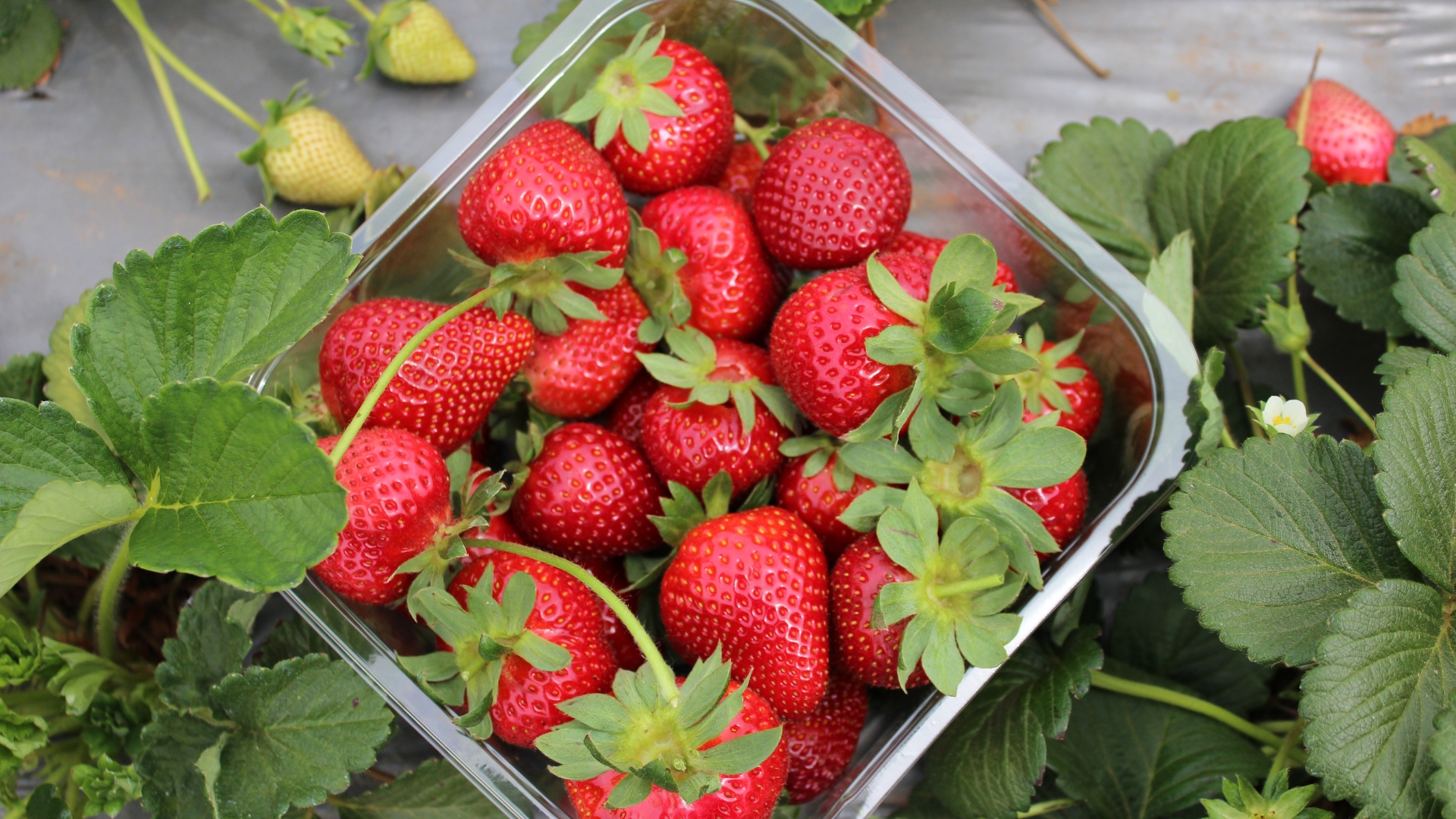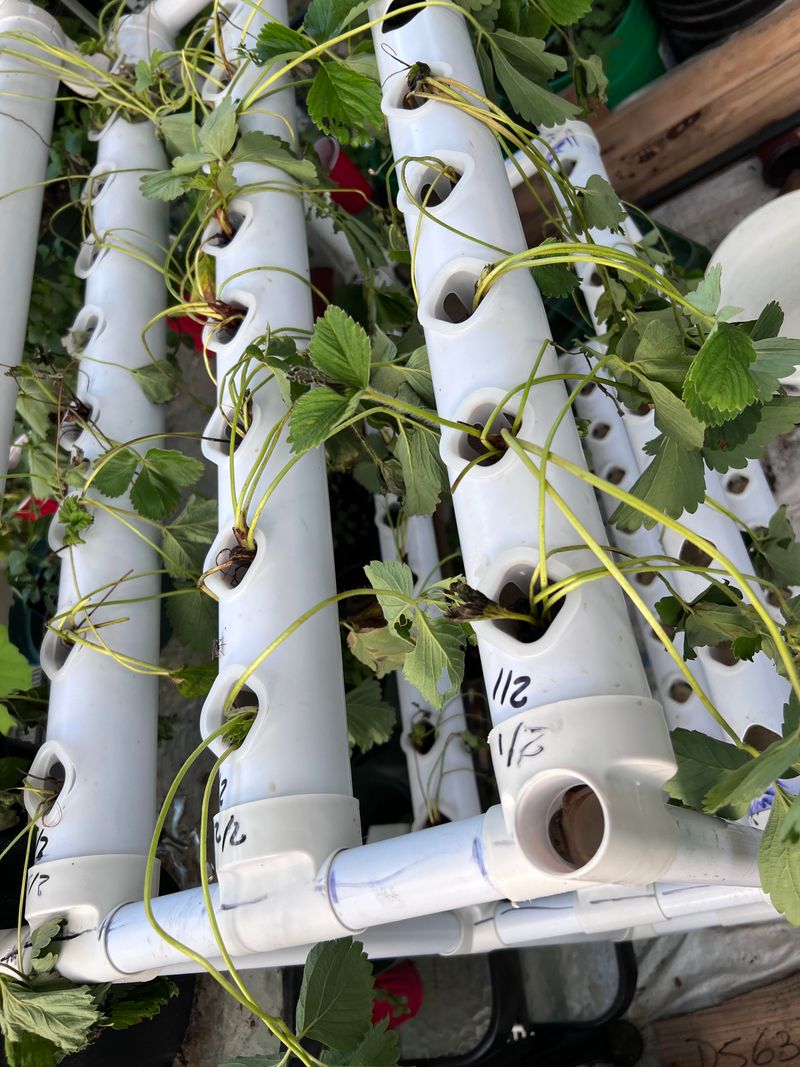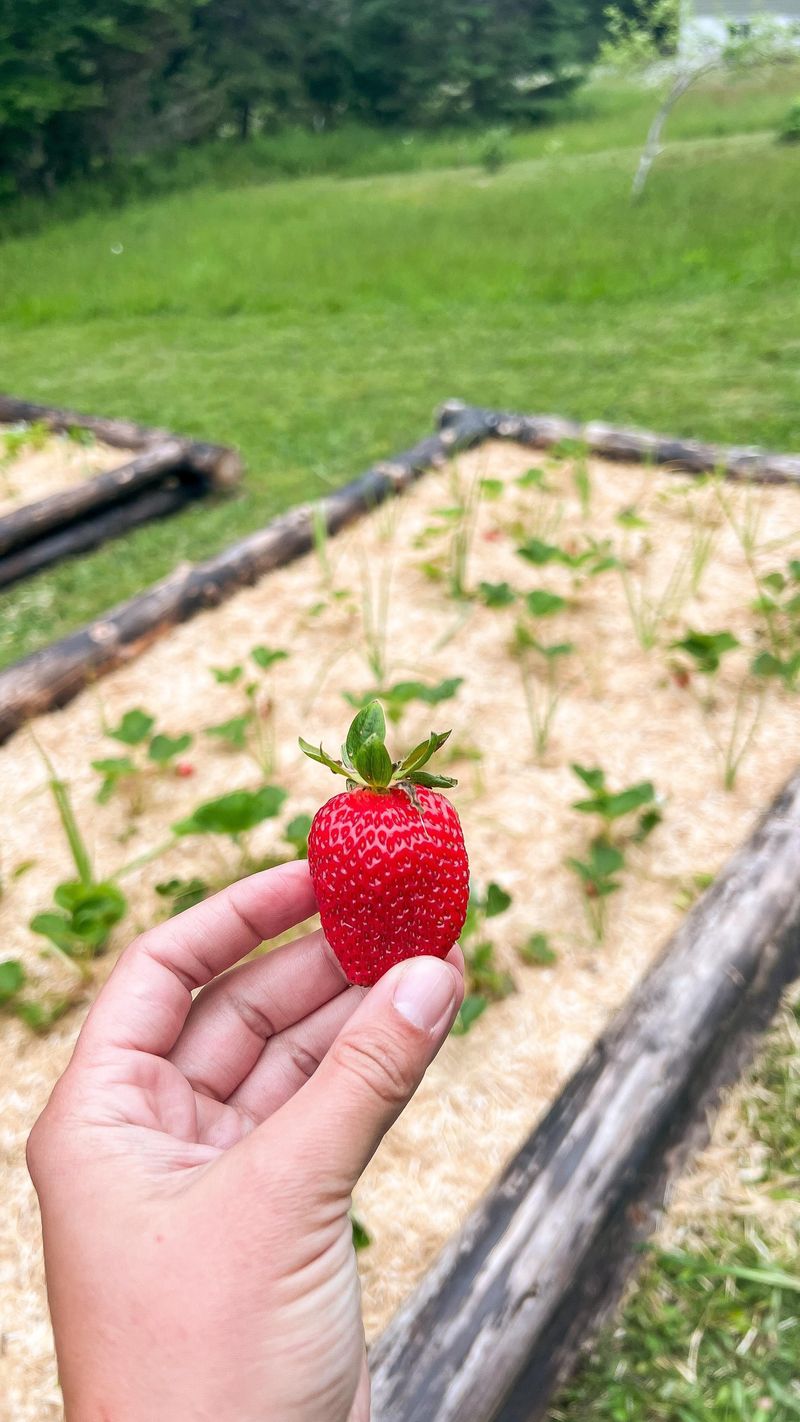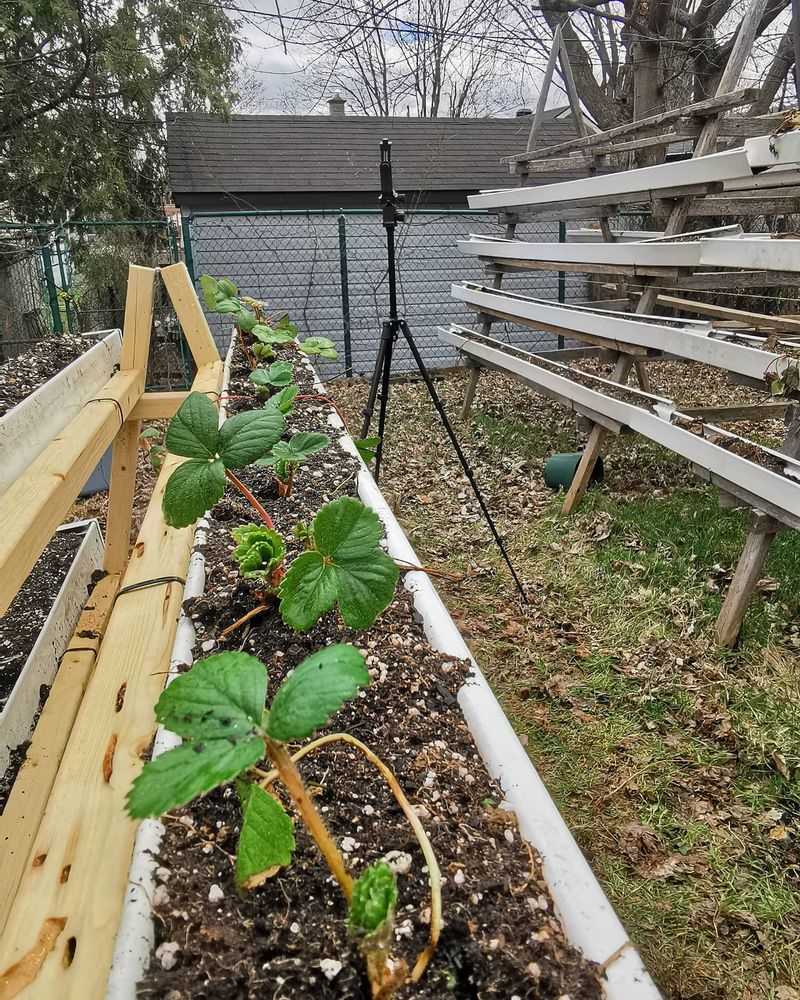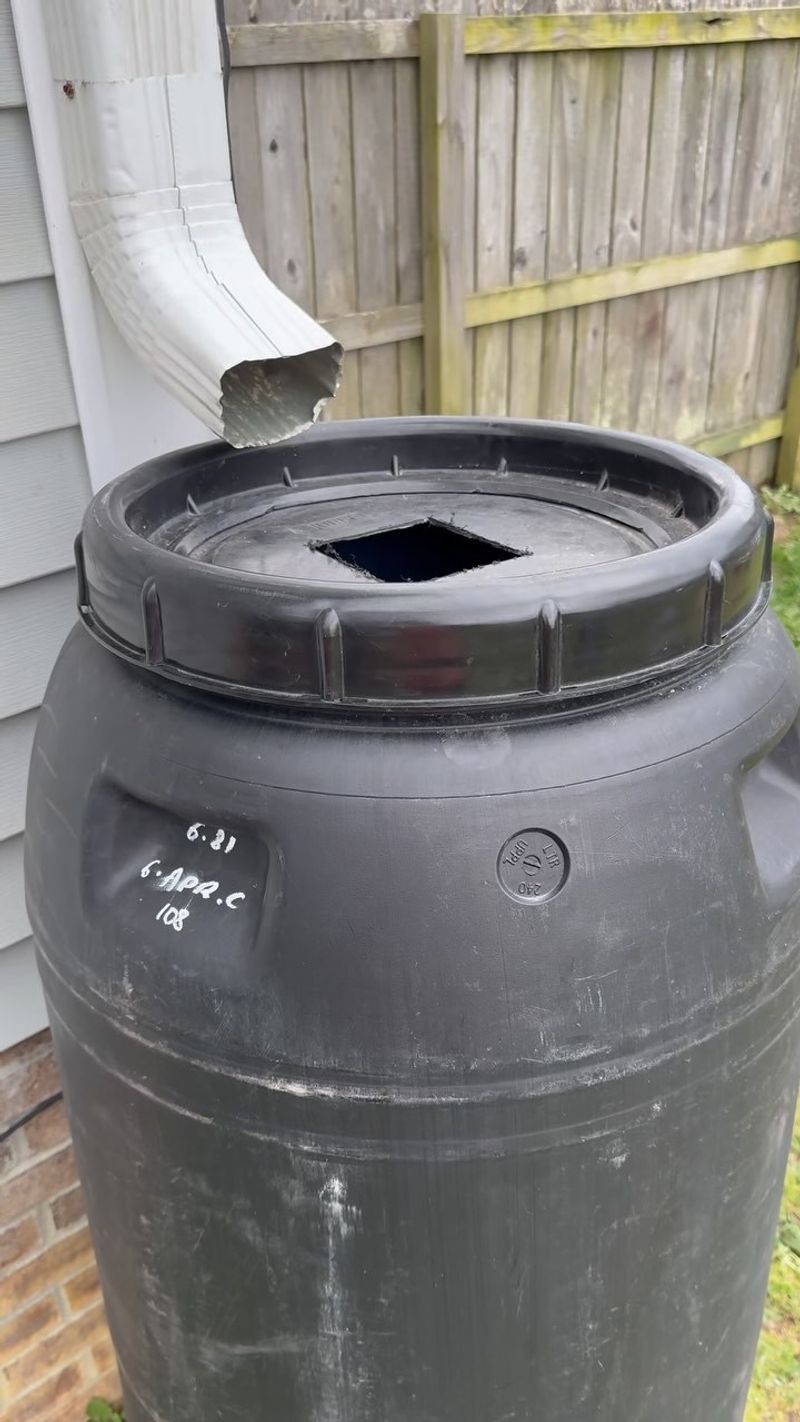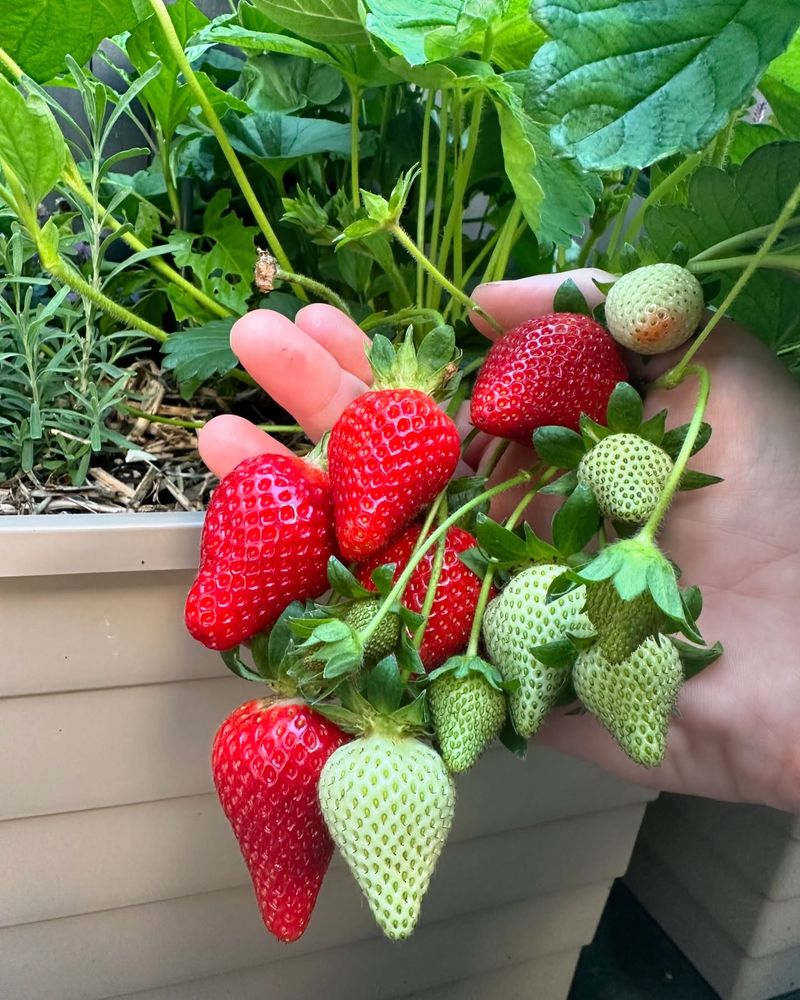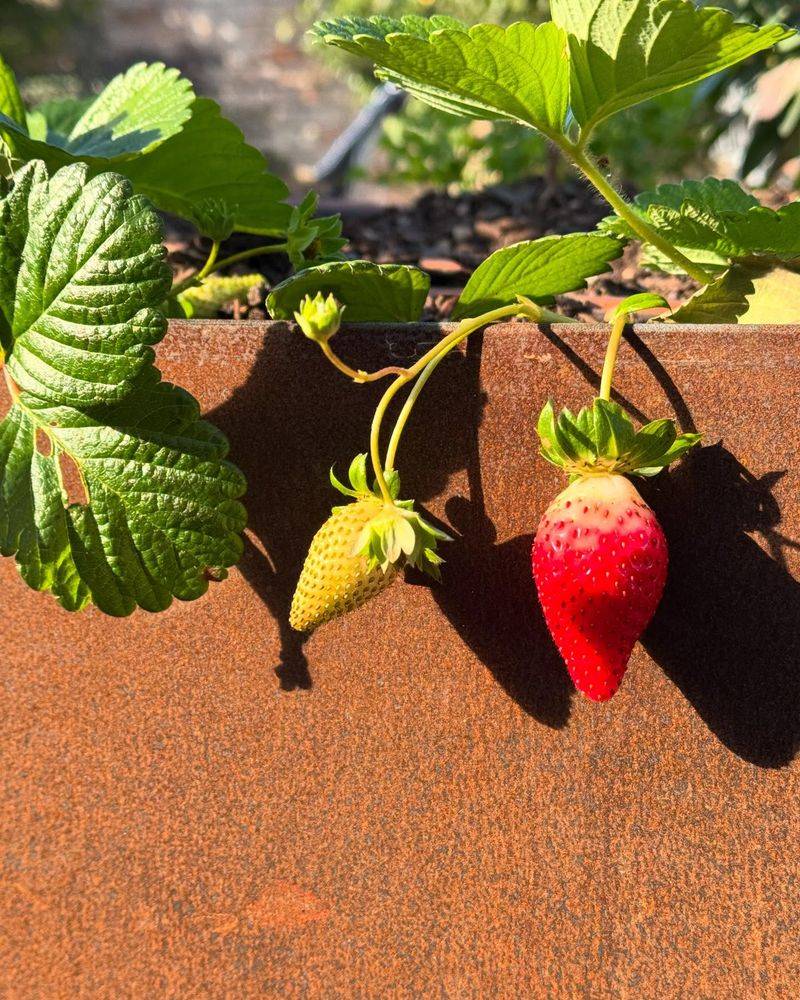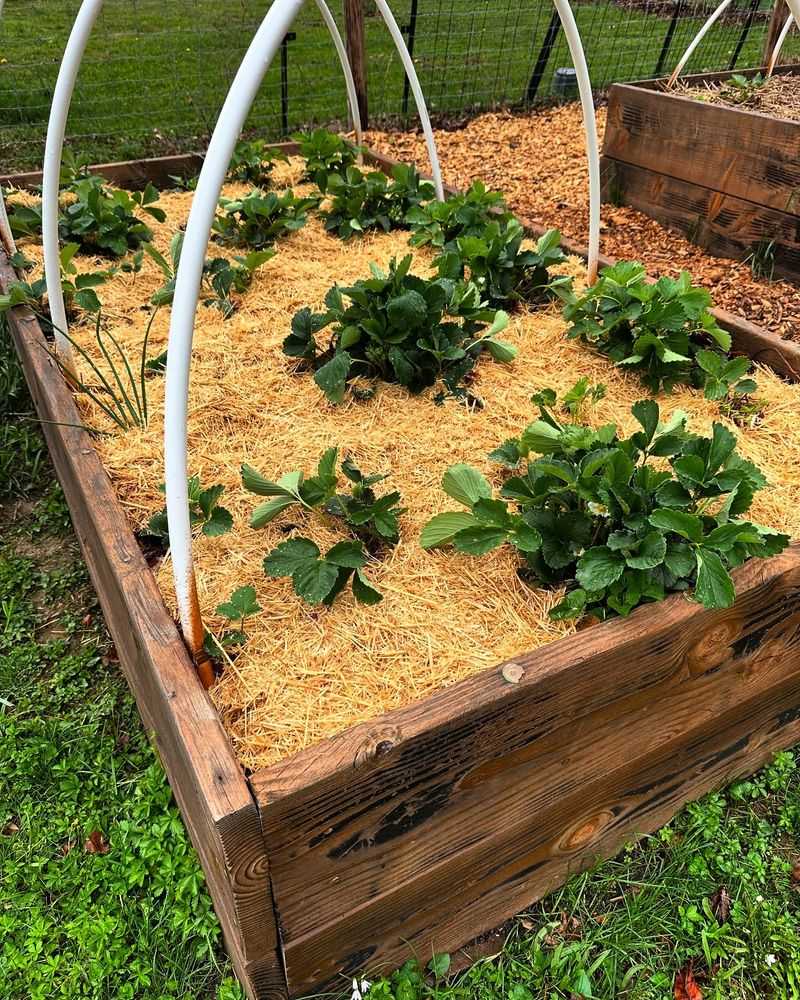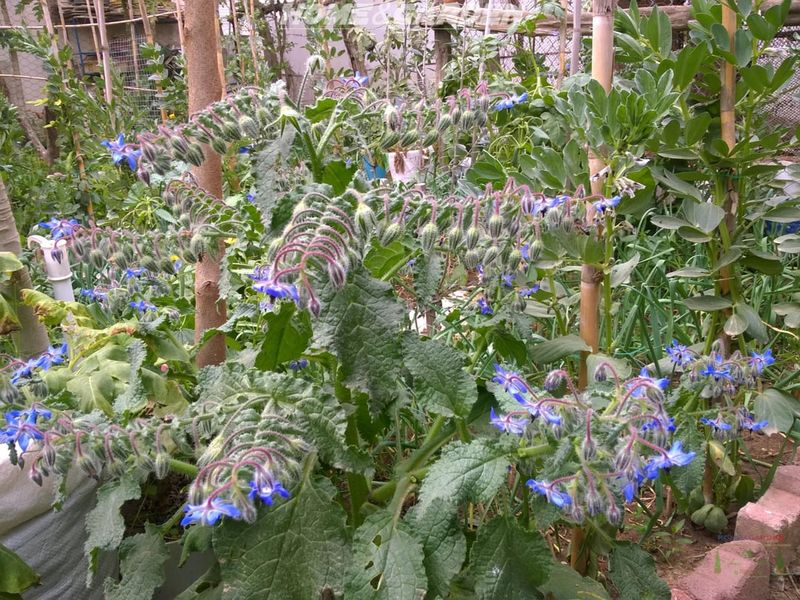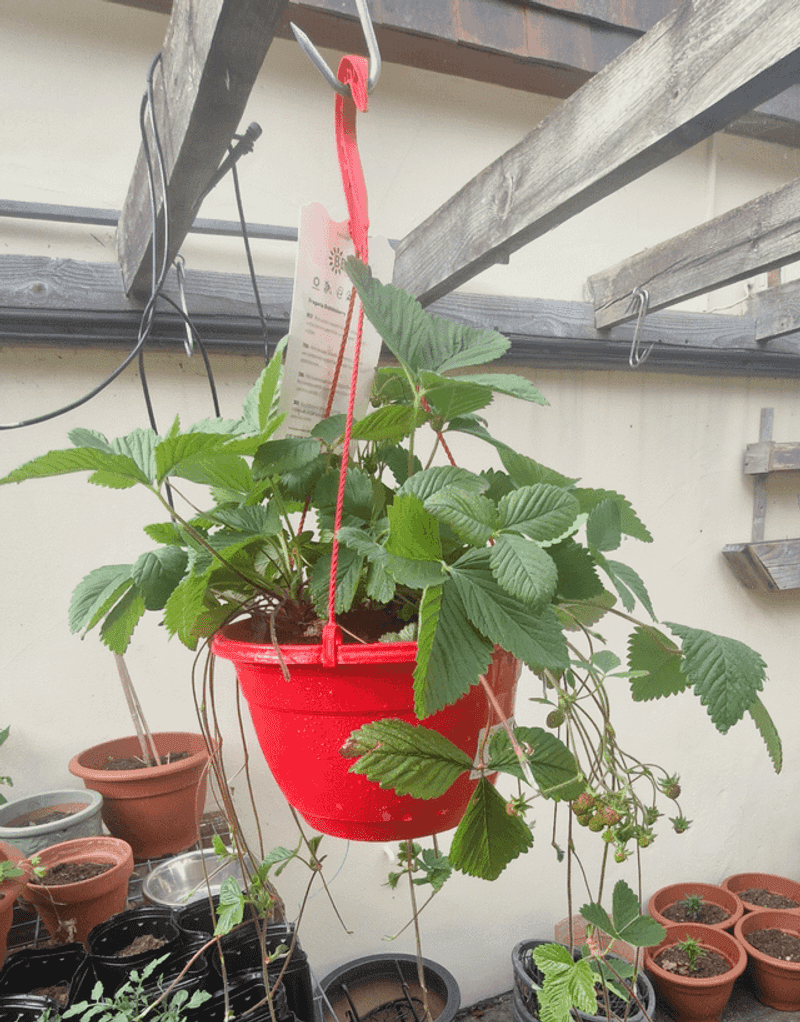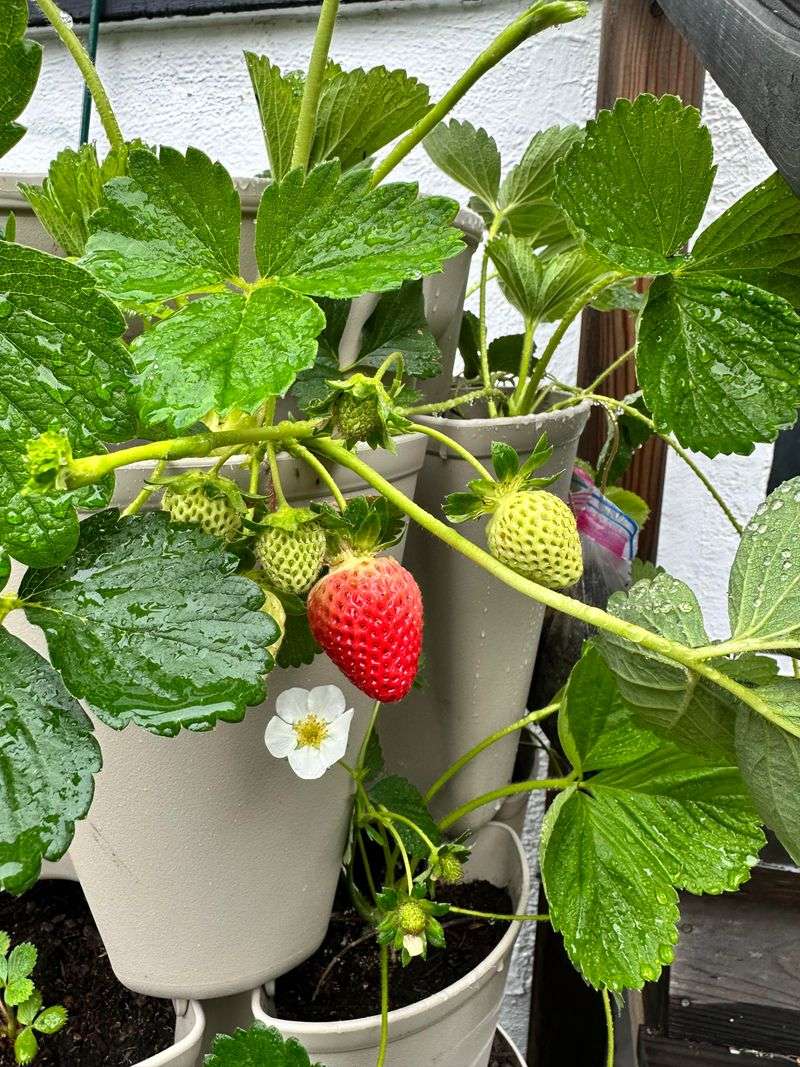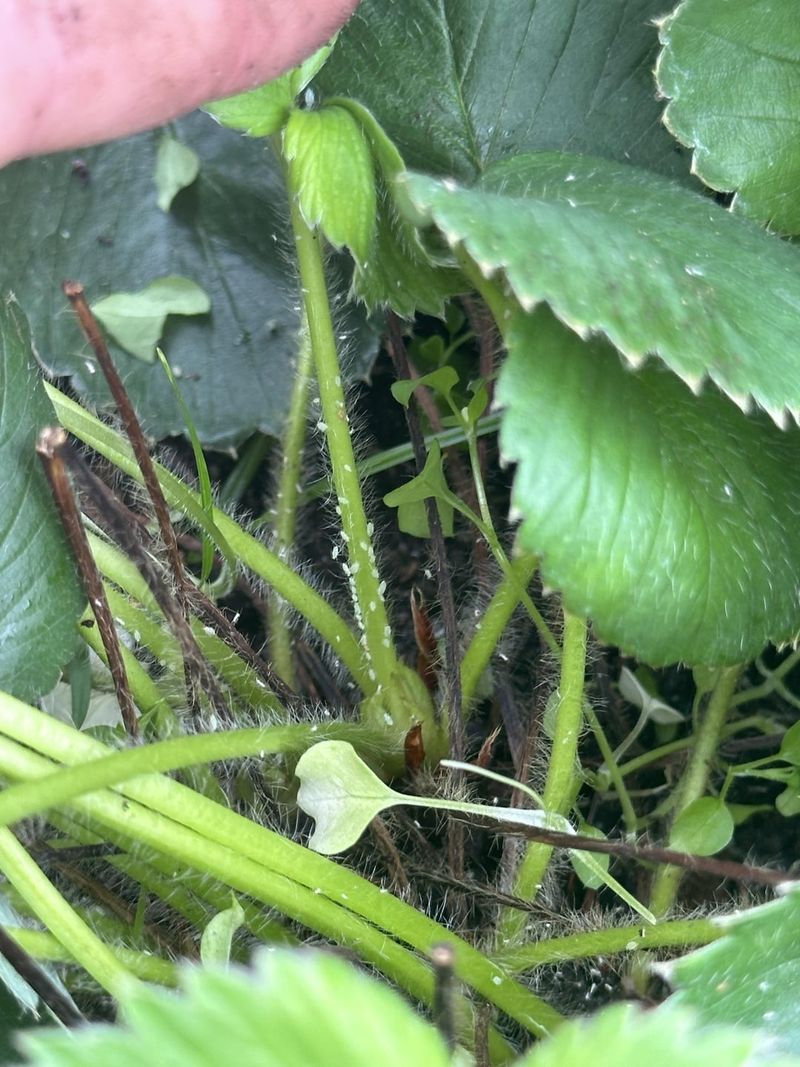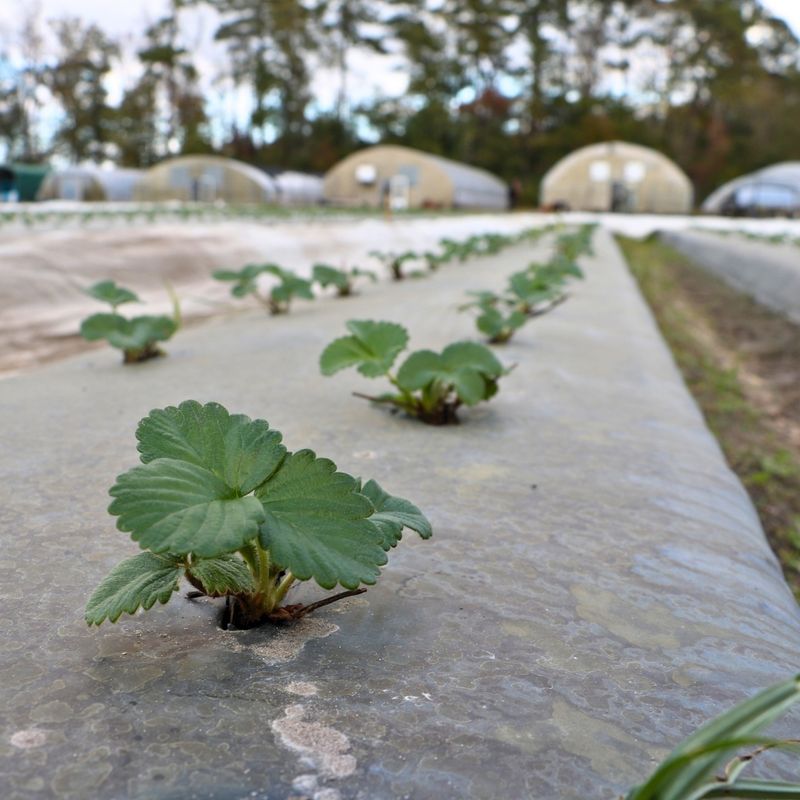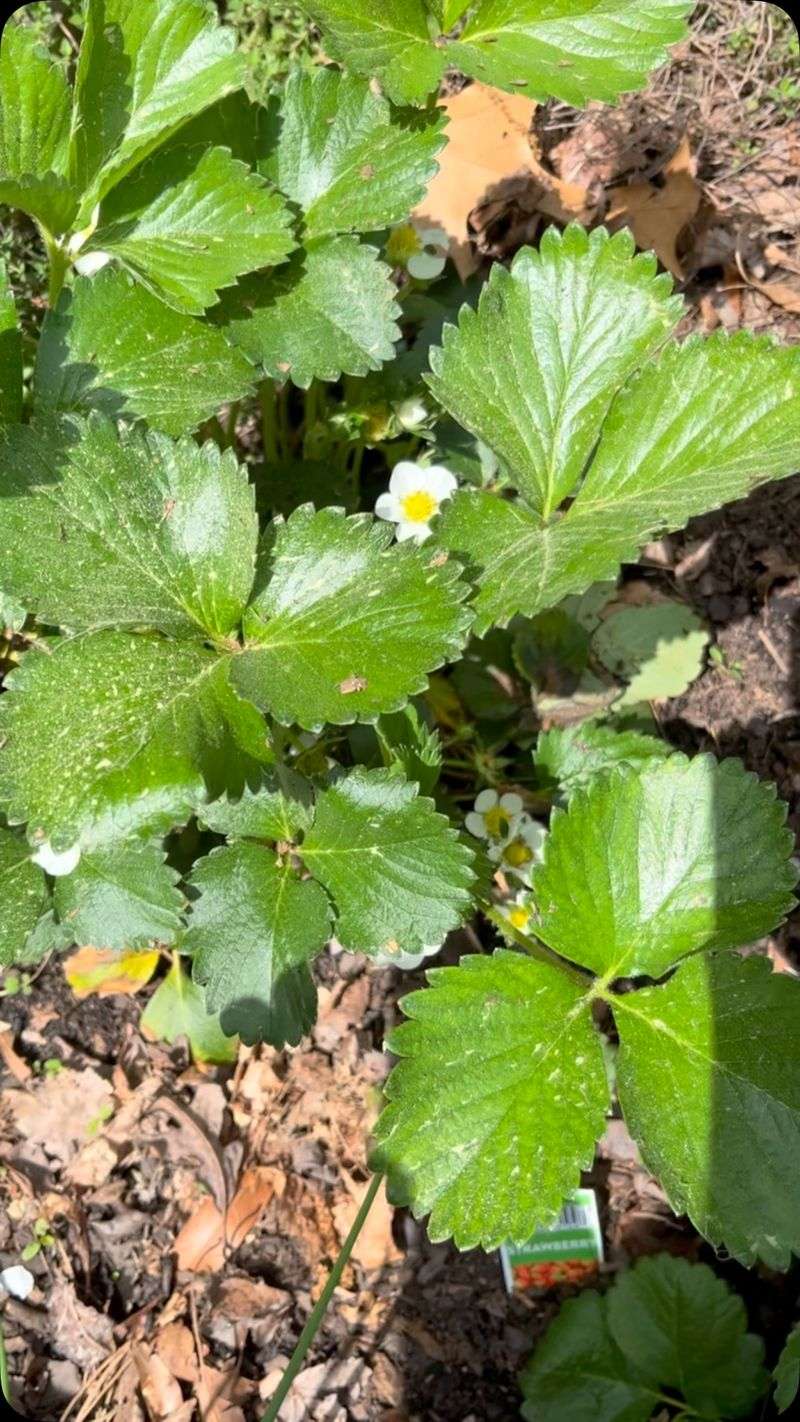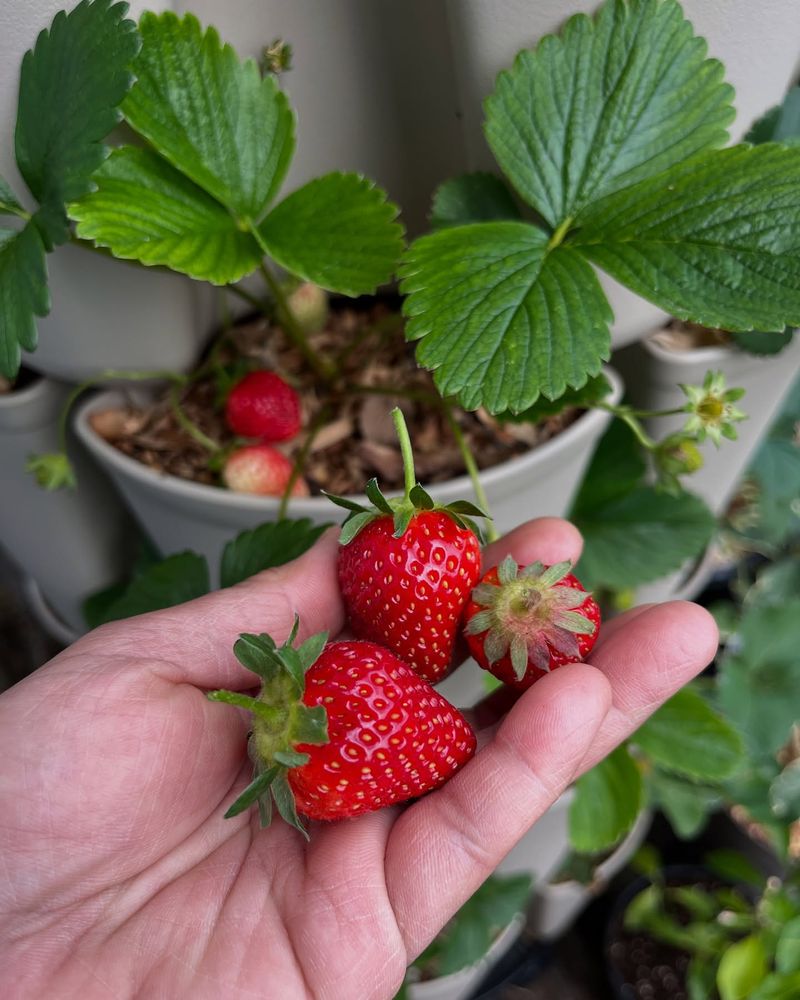Strawberries have a way of making any garden feel a little sweeter—but getting juicy, plump berries means getting watering just right. I’ve tried all sorts of methods, and some definitely worked better than others.
It’s amazing how a few simple tweaks can make your plants happier and your harvest bigger. Beyond watering, there are a few extra tricks that helped me boost fruit and keep my plants thriving.
Here are my favorite ways to keep those strawberries juicy and plentiful.
1. Morning Drip Irrigation
Early morning watering gives strawberry plants time to absorb moisture before the heat of the day. Setting up a simple drip irrigation system delivers water directly to the roots without wetting the leaves or fruit.
This targeted approach reduces disease risk and water waste. Your berries will thank you with plumper fruits and stronger growth throughout the season. Plus, automation means you can sleep in while your plants get perfectly watered!
2. Mulch and Water Retention
Straw mulch acts like a protective blanket for your strawberry patch, keeping moisture locked in the soil where roots can access it. Apply a 2-inch layer around plants, being careful not to cover the crown.
Not only does mulch reduce watering frequency, but it also prevents soil splashing onto fruits during rain. Many gardeners report cutting their watering needs in half after proper mulching, saving time and resources while growing healthier plants.
3. Self-Watering Container Systems
Container gardeners rejoice! Self-watering pots provide consistent moisture for strawberries without daily attention. The reservoir beneath holds water that plants draw up as needed through wicking action.
Perfect for busy folks or during hot spells when plants get thirsty fast. These clever systems reduce watering chores to once weekly in moderate weather. Your berries maintain steady growth without the stress of fluctuating between bone-dry and waterlogged conditions.
4. Rain Barrel Collection
Rainwater harvesting gives strawberries a natural drink free from chlorine and other tap water additives. Simply position a barrel under your downspout and collect nature’s bounty for your berries.
The slightly acidic pH of rainwater actually benefits strawberries, which prefer soil on the acidic side. Many growers notice improved flavor in rain-watered berries compared to those irrigated with municipal water. Plus, you’ll save on water bills while being environmentally friendly!
5. Deep Watering Technique
Instead of frequent shallow sprinkles, give strawberries one thorough soaking weekly. This encourages deeper root development, making plants more drought-resistant and stable. Use a soaker hose left in place for 30-45 minutes.
Check soil moisture by inserting your finger 2 inches deep—if it feels dry, it’s watering time. Deep-rooted strawberry plants produce more runners and fruit than their shallow-watered counterparts. They’re also less susceptible to stress during hot weather.
6. Raised Bed Advantage
Elevating your strawberry patch in raised beds creates perfect drainage conditions these berries crave. The soil warms faster in spring, jumpstarting growth before ground-level plantings even wake up.
Raised beds prevent waterlogging during heavy rains while making harvest easier on your back. Many gardeners report harvesting berries up to two weeks earlier from raised beds. The controlled environment also means you can customize soil exactly to strawberry preferences.
7. Pine Needle Magic
Fresh pine needles make an exceptional mulch for strawberries, naturally increasing soil acidity that these berries love. Their structure allows water to penetrate while preventing weed growth and keeping berries clean.
Unlike other mulches, pine needles resist compaction and decompose slowly, providing long-lasting benefits. Gather them from fall yard cleanup for free garden gold! The slight acidity they impart to soil often results in sweeter berries with more complex flavor profiles.
8. Companion Planting Strategy
Borage planted alongside strawberries attracts beneficial pollinators while deterring pests. The blue flowers bring bees that improve strawberry pollination, resulting in better-formed fruits and higher yields.
Spinach makes another excellent neighbor, providing ground cover that suppresses weeds without competing for nutrients. Avoid planting near cabbage family members, which inhibit strawberry growth. This natural partnership reduces the need for pesticides while creating a beautiful edible landscape.
9. Eggshell Calcium Boost
Crushed eggshells provide essential calcium that prevents blossom end rot and strengthens cell walls in strawberry fruits. Save kitchen scraps, rinse clean, and crush finely before sprinkling around plants.
Beyond calcium, eggshells deter slugs and snails with their sharp edges, protecting tender berries from these common pests. Apply monthly during the growing season for continuous protection. Many gardeners report firmer berries that store longer after implementing this simple kitchen-waste solution.
10. Runner Management
Controlling strawberry runners focuses plant energy on fruit production rather than spreading. Use scissors to remove most runners, keeping only those needed for propagation or to fill gaps in your patch.
First-year plants especially benefit from runner removal, producing up to 50% more berries when not supporting baby plants. Leave just 2-3 runners per mother plant if you want to expand your patch. This simple pruning task takes minutes but dramatically increases your harvest potential.
11. Rotation Rejuvenation
Relocating your strawberry patch every three years prevents disease buildup and soil depletion. The old gardener’s rule—never plant strawberries where they’ve grown before without a 3-year waiting period—exists for good reason.
Fresh soil means fewer pathogens and more nutrients available for berry production. During rotation years, grow legumes like beans in the former strawberry bed to fix nitrogen. Many gardeners report nearly double yields after implementing proper crop rotation compared to static plantings.
12. Vinegar Fungus Fighter
A diluted vinegar spray tackles powdery mildew before it damages your strawberry patch. Mix 1 tablespoon white vinegar with 1 gallon water and spray during dry morning hours once weekly.
This gentle acid changes leaf surface pH, creating an inhospitable environment for fungal spores without harming beneficial insects. Apply preventatively during humid periods when fungus thrives. Unlike chemical fungicides, this kitchen solution leaves no harmful residue on your berries.
13. Winter Protection Protocol
Strawberries need winter blankets in cold regions! Apply 4 inches of straw mulch after the first hard freeze but before temperatures drop below 20°F. This insulation prevents root damage from freeze-thaw cycles.
Remove mulch gradually in spring when daytime temperatures consistently reach 40°F. Proper winter protection increases second-year yields by up to 60%. In milder climates, a lighter mulch layer still benefits plants by suppressing winter weeds and protecting crowns.
14. Blossom Pinching Technique
First-year strawberry plants benefit tremendously from having their initial flower blossoms pinched off. This seemingly counterintuitive practice redirects energy to root development rather than fruit production, setting the stage for bumper crops next season.
Remove blossoms for the first 6-8 weeks after planting. While sacrificing immediate gratification, patient gardeners report harvests three times larger in subsequent years compared to those who let first-year plants fruit. Consider it an investment in future berry abundance!
15. Coffee Grounds Amendment
Used coffee grounds work wonders as a strawberry fertilizer and soil amendment. Their slight acidity and nitrogen content create ideal growing conditions while improving soil structure and drainage.
Sprinkle a thin layer around plants monthly during growing season, being careful not to pile grounds against stems. Worms love coffee grounds too, increasing their activity in your strawberry patch. Many gardeners notice darker green foliage and more vigorous growth after regular coffee ground applications.

